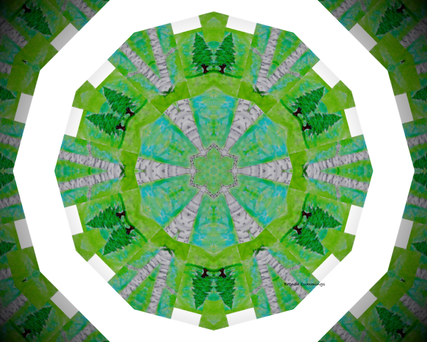
Photosynthesis is a Greek word in origin. It means “putting together with light”. The process itself is miraculous. Almost magical - Out of thin air, sunlight, and water, plant life and trees are born.
The process is used by green plants and trees to convert light energy from the sun into chemical energy. Trees store this energy in their leaves, using it to grow, form flowers and produce fruit. Like most plants, a tree’s chemical energy is stored in simple sugars which are made from taking in carbon dioxide and water. Oxygen -- the waste product -- and water vapor are then exhaled from the leaves. Without photosynthesis, there would be no life on Earth. Trees and plants literally breathe life into the atmosphere.
When winter arrives in the northern hemisphere, where the largest number of the world’s trees grow, atmospheric carbon dioxide levels are at their highest. The trees lie dormant, resting through the colder months, but in the spring, when leaves begin to breathe again, CO2 levels go back down. Trees return to the job of absorbing carbon dioxide, and cleaning up the air. Trees breathe like we do, only in reverse. Carbon in. Oxygen out. NASA has actually created a computer model allowing us to watch this global breathing process, and it is breath-taking.
https://www.youtube.com/watch?v=x1SgmFa0r04
The model is a powerful visualization, showing us how winds and weather patterns travel around the globe, and it illustrates the fact that everything is connected.
New research published in the journal Forest Ecology and Management shows how crucial the breathing of trees is to our future. This recent news about California’s redwoods is helping to prove in no uncertain terms just how important trees are as a weapon against climate change.
The seven-year study by Humboldt State University and the University of Washington indicates that California’s redwood trees manage to store about 2,600 metric tons of carbon for every 2.5 acres of forest. Led by Robert Van Pelt, the enormous team meticulously studied 11 forested areas spanning about 500 miles, from the Oregon border to UC’s Landels-Hill Big Creek Reserve in Big Sur.
Of all the tallest trees across the globe, including the giant sequoia, Douglas fir, Sitka spruce, Australia’s mountain ash and the Tasmanian blue gum, California’s redwoods are the best at storing carbon because they live the longest. Even after redwoods die they continue to store carbon in their heartwood, which takes a much longer time to decompose than wood from other kinds of forests.
"We finally got the numbers," said Van Pelt. "No one has ever gotten them before. It took an army of people seven years to get all that. It was very satisfying."
Breathing is the rhythm of life, and if we hope to keep breathing ourselves, we must nurture the breathing of the trees.

 RSS Feed
RSS Feed
